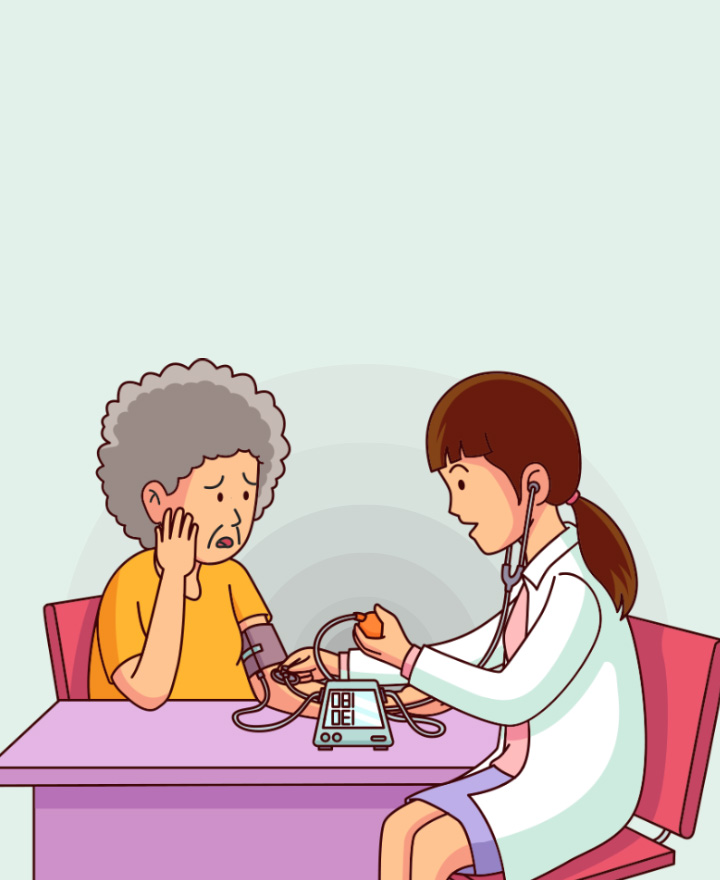

Vitamin D 60,000 IU Weekly Side Effects
Vitamin D is one of the primary reasons people have healthy bones and an efficiently functioning immune system. Individuals who do not get adequate exposure to sunlight and/or do not take enough amounts of vitamin D usually suffer from fatigue, bone pain, and mood swings. These are some common problems that come with vitamin D deficiency. To treat this, doctors prescribe high-dose supplements such as 60,000 IU weekly. This amount replenishes vitamin D levels quickly, but care must be taken to avoid accumulation within the body. Read on to know more.
What is Vitamin D 60,000 IU?
Vitamin D 60,000 IU is a high-dose vitamin D supplement often prescribed to individuals with severe deficiencies. The target should be to quickly raise vitamin D levels in the body and avoid symptoms like bone pain and weakness. While this dosage sounds too high, it's a standard recommendation for people who need to correct their vitamin D deficiency fast.
The treatment is typically prescribed on a weekly basis and helps individuals who don’t get enough vitamin D from their diet or exposure to sunlight. However, taking too much can lead to toxicity, as vitamin D builds up in the body. So, it's critical to follow your doctor's instructions closely.
Side Effects of Vitamin D 60,000 IU Weekly
Taking 60,000 IU of vitamin D weekly can lead to side effects if not monitored carefully. Some potential vitamin D 60,000 IU weekly side effects can be —
• Nausea: A common early symptom if your body is getting too much vitamin D
• Vomiting: An extreme reaction indicating that your vitamin D levels might be too high
• Extreme Tiredness: Feeling unusually fatigued or sleepy may be a sign of an issue
• Bone Pain: Excess of vitamin D can lead to bone pain, the very symptom it’s supposed to alleviate.
• High Calcium Levels (Hypercalcemia): Excess vitamin D can lead to an elevated calcium level in your blood, which may cause confusion, frequent urination, or even kidney stones.
• Kidney Issues: High levels of vitamin D can potentially damage the kidneys, leading to reduced function or kidney stones.
Tips for Avoiding Side Effects
To avoid vitamin D 60,000 IU side effects, follow these important tips —
• Always follow your doctor's recommended dosage
• Keep an eye out for early signs of toxicity like nausea, vomiting, or fatigue, and contact your doctor if you experience any of these symptoms.
• Vitamin D absorbs better when consumed with healthy fats like those found in avocados, nuts, or olive oil.
• Drink plenty of water to help your body process the vitamin and reduce the risk of kidney-related side effects.
Side Effects of Oral Solution Form
The oral solution form of vitamin D 60,000 IU is a convenient and effective way to treat deficiencies, but it comes with its own set of potential side effects due to rapid absorption. Some side effects of vitamin D3 Oral Solution 60,000 IU include the following —
• Upset Stomach
• Dry Mouth or Metallic Taste
• Headaches or even migraines
• Constipation or Diarrhoea
• Dizziness or Light-headedness
Tips to Reduce Side Effects of Oral Solution
• Take with Food as meal improves absorption and eases digestive discomfort.
• Drink plenty of water to minimize the risk of digestive issues and dehydration.
• If you experience persistent side effects, consult your doctor.
Pro Tips
• Ask your doctor if you can spread the dosage out over the week.
• Get Regular Check-ups to ensure your vitamin D levels aren’t too high.
• Add magnesium-rich foods like spinach, almonds, or whole grains to your diet can enhance your vitamin D absorption.
Facts
• Vitamin D Toxicity is Rare: While uncommon, vitamin D toxicity can occur, especially when taking high doses over a prolonged period. Symptoms like hypercalcemia (too much calcium in the blood) can lead to kidney stones and other complications.
• 60,000 IU is Commonly Prescribed: This dose is safe when taken once a week under medical supervision, particularly for those with severe deficiencies. It is not meant for long-term use unless recommended by your doctor.
• Sunlight Still Counts: Even when supplementing, your body can still produce vitamin D from sunlight. Spending time outdoors can help boost your vitamin D levels naturally.
Conclusion
Taking 60,000 IU of vitamin D weekly can be a highly effective way to treat a deficiency, especially when your levels are low and you need a quick boost. While generally safe under medical supervision, it’s crucial to stick to the prescribed dosage and be mindful of potential side effects.
One of the important components of our overall wellness is also being financially secured. Healthcare emergencies can happen any time, but a good health insurance policy can protect you from such uncertain situations. To know more about Wellness and other health related tips, visit the wellness corner.
Source: mayoclinic, health.harvard.edu
Disclaimer: This blog provides general information and discussions about health and related subjects. The information and other content provided in this blog, website or in any linked materials are not intended and should not be considered, or used as a substitute for, medical advice, diagnosis or treatment. Kindly contact your Doctor before starting a new medicine or health regime.
Related Articles
Vitamin D for Elderly During Rains
Types of Vitamins and their Functions
Essential Vitamins and Supplements for Healthy Ageing
Published on November 29, 2024


 Health Insurance
Health Insurance  Travel Insurance
Travel Insurance  Car Insurance
Car Insurance  Cyber Insurance
Cyber Insurance  Critical Illness Insurance
Critical Illness Insurance
 Pet Insurance
Pet Insurance
 Bike/Two Wheeler Insurance
Bike/Two Wheeler Insurance  Home Insurance
Home Insurance  Third Party Vehicle Ins.
Third Party Vehicle Ins.  Tractor Insurance
Tractor Insurance  Goods Carrying Vehicle Ins.
Goods Carrying Vehicle Ins.  Passenger Carrying Vehicle Ins.
Passenger Carrying Vehicle Ins.  Compulsory Personal Accident Insurance
Compulsory Personal Accident Insurance  Travel Insurance
Travel Insurance  Rural
Rural